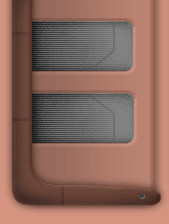Brief history of CRISP
The Consortium was set up in the UK in 1996 by a group of academics and engineers specialising in modelling geotechnical engineering problems. The group aims to promote the teaching of the finite element method via the software CRISP (CRitical State soil mechanics Program). This FE software was originally developed by research workers in the Cambridge University Soil Mechanics Group in the late 70's. Critical state soil mechanics (CSSM) provides a complete theoretical framework for describing the mechanical behaviour of soil. Finite element techniques allow CSSM theories to be applied to predicting ground movements associated with foundations, excavations, and other situations in geotechnical engineering. In addition, the software was expanded to allow modelling soil structure interaction and to cover a wide range of constitutive models suitable for a variety of soil conditions.
In 1995 a user friendly CAD style Windows interface to CRISP was introduced. The CRISP engine is written in standard FORTRAN90; a programing language which is still widely used by the Geotechnical research community. The Consortium aims to provide a forum for education, research and development for users and developers of CRISP. The Consortium uses the revenue obtained from the sale of CRISP to invest in further research in the area of geotechnical engineering and to further enhance the capabilities of program CRISP. The Consortium also provides consulting services for geotechnical projects.
| 












